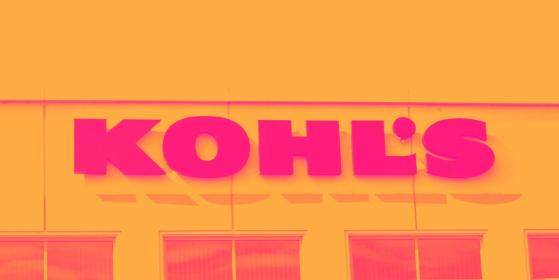As the craze of earnings season draws to a close, here’s a look back at some of the most exciting (and some less so) results from Q2. Today, we are looking at department store stocks, starting with Kohl's (NYSE:KSS).
Department stores emerged in the 19th century to provide customers with a wide variety of merchandise under one roof, offering a convenient and luxurious shopping experience. They played an important role in the history of American retail and urbanization, and prior to department stores, retailers tended to sell narrow specialty and niche items. But what was once new is now old, and department stores are somewhat considered a relic of the past. They are being attacked from multiple angles–stagnant foot traffic at malls where they’ve served as anchors; more nimble off-price and fast-fashion retailers; and e-commerce-first competitors not burdened by large physical footprints.
The 4 department store stocks we track reported a very strong Q2. As a group, revenues beat analysts’ consensus estimates by 0.5%.
While some department store stocks have fared somewhat better than others, they have collectively declined. On average, share prices are down 3.1% since the latest earnings results.
Best Q2: Kohl's (NYSE:KSS)
Founded as a corner grocery store in Milwaukee, Wisconsin, Kohl’s (NYSE:KSS) is a department store chain that sells clothing, cosmetics, electronics, and home goods.Kohl's reported revenues of $3.73 billion, down 4.2% year on year. This print exceeded analysts’ expectations by 2.1%. Overall, it was a decent quarter for the company with an impressive beat of analysts’ earnings estimates.
Tom Kingsbury, Kohl’s chief executive officer, said, “We have taken significant action to reposition Kohl’s for future growth. However, our efforts have yet to fully yield the intended outcome due in part to a continued challenging consumer environment and softness in our core business.”
Kohl's pulled off the biggest analyst estimates beat of the whole group. Investor expectations, however, were likely higher than Wall Street’s published projections, leaving some wishing for even better results (analysts’ consensus estimates are those published by big banks and advisory firms, not the investors who make buy and sell decisions). The stock is down 5.8% since reporting and currently trades at $18.47.
Is now the time to buy Kohl's? Find out by reading the original article on StockStory, it’s free.
Nordstrom (NYSE:JWN)
Known for its exceptional customer service that features a ‘no questions asked’ return policy, Nordstrom (NYSE:JWN) is a high-end department store chain.Nordstrom reported revenues of $3.89 billion, up 3.2% year on year, in line with analysts’ expectations. The business had a stunning quarter with an impressive beat of analysts’ earnings estimates.
Nordstrom achieved the fastest revenue growth among its peers. The market seems happy with the results as the stock is up 8.3% since reporting. It currently trades at $22.91.
Weakest Q2: Dillard's (NYSE:DDS)
With stores located largely in the Southern and Western US, Dillard’s (NYSE:DDS) is a department store chain that sells clothing, cosmetics, accessories, and home goods.Dillard's reported revenues of $1.51 billion, down 5.2% year on year, falling short of analysts’ expectations by 1.1%. It was a softer quarter as it posted a miss of analysts’ EBITDA and earnings estimates.
Dillard's delivered the weakest performance against analyst estimates and slowest revenue growth in the group. Interestingly, the stock is up 2.5% since the results and currently trades at $399.96.
Macy's (NYSE:NYSE:M)
With a storied history that began with its 1858 founding, Macy’s (NYSE:M) is a department store chain that sells clothing, cosmetics, accessories, and home goods.Macy's reported revenues of $5.10 billion, down 3.5% year on year. This number surpassed analysts’ expectations by 1%. It was a very strong quarter as it also logged an impressive beat of analysts’ earnings estimates.
The stock is down 7% since reporting and currently trades at $16.50.
Market Update
As expected, the Federal Reserve cut its policy rate by 25bps (a quarter of a percent) in November 2024 after Donald Trump triumphed in the US Presidential election. This marks the central bank's second easing of monetary policy after a large 50bps rate cut two months earlier. Going forward, the markets will debate whether these rate cuts (and more potential ones in 2025) are perfect timing to support the economy or a bit too late for a macro that has already cooled too much. Adding to the degree of difficulty is a new Republican administration that could make large changes to corporate taxes and prior efforts such as the Inflation Reduction Act.Want to invest in winners with rock-solid fundamentals? Check out our and add them to your watchlist. These companies are poised for growth regardless of the political or macroeconomic climate.
This content was originally published on Stock Story

